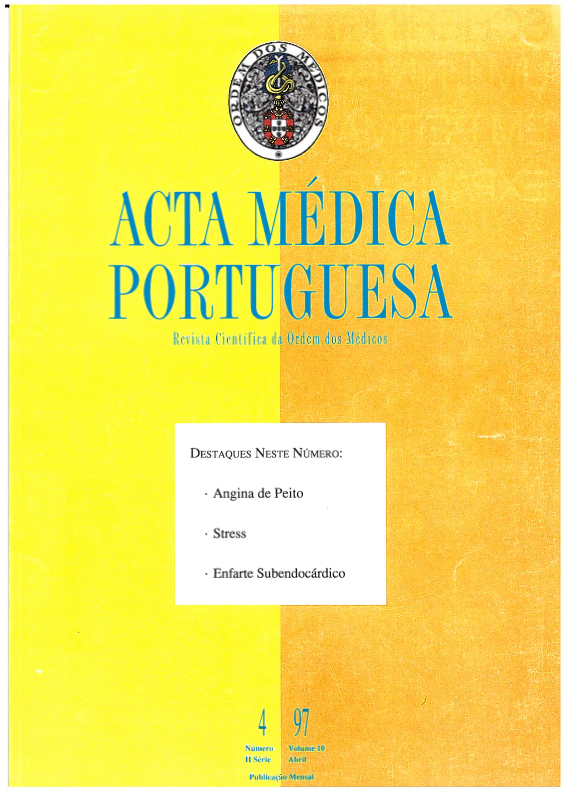Coronary artery disease, myocardial perfusion and ventricular function in Q-wave and non-Q-wave myocardial infarcts.
DOI:
https://doi.org/10.20344/amp.2408Abstract
Controversy remains in considering non-Q wave myocardial infarction (NQMI) a distinct pathophysiological entity of Q wave myocardial infarction (QMI). In order to analyze the severity of coronary artery disease, extension of myocardial scar or myocardial ischemia and ventricular function, 78 consecutive patients with QMI and 32 with NQMI, mean age 55.4 +/- 8.5, not submitted to thrombolytic therapy, were studied. Coronary angiography, exercise thallium scintigraphy and radionuclide ventriculography were performed in all at least within 3 months of a prior myocardial infarction. In the present study the occurrence of QMI was significantly more frequent in older patients than NQMI. There was no prevalence of occlusion either in the right, left circumflex or left anterior descending coronary arteries in both groups. Ejection fraction, degree of occlusion and presence of collateral circulation showed an equal prevalence in QMI and NQMI patients. A higher incidence of multivessel disease was found in NQMI that had less necrosis than QMI patients. The prevalence of exercise induced thallium-201 redistribution defects within the infarct zone was substantially higher and involved more scar segments in NQMI patients. Physiological and clinical consequences of coronary thrombosis depends on the size and the number of diseased arteries, the approach the pathophysiologic consequences of coronary disease in terms of fractal structure has been suggested. A pronounced heterogeneity in regional myocardial blood flow in a fractal branching arterial network may be responsible for the pathophysiologic differences of coronary thrombosis between Q-wave and non Q-wave infarction.Downloads
Downloads
How to Cite
Issue
Section
License
All the articles published in the AMP are open access and comply with the requirements of funding agencies or academic institutions. The AMP is governed by the terms of the Creative Commons ‘Attribution – Non-Commercial Use - (CC-BY-NC)’ license, regarding the use by third parties.
It is the author’s responsibility to obtain approval for the reproduction of figures, tables, etc. from other publications.
Upon acceptance of an article for publication, the authors will be asked to complete the ICMJE “Copyright Liability and Copyright Sharing Statement “(http://www.actamedicaportuguesa.com/info/AMP-NormasPublicacao.pdf) and the “Declaration of Potential Conflicts of Interest” (http:// www.icmje.org/conflicts-of-interest). An e-mail will be sent to the corresponding author to acknowledge receipt of the manuscript.
After publication, the authors are authorised to make their articles available in repositories of their institutions of origin, as long as they always mention where they were published and according to the Creative Commons license.









